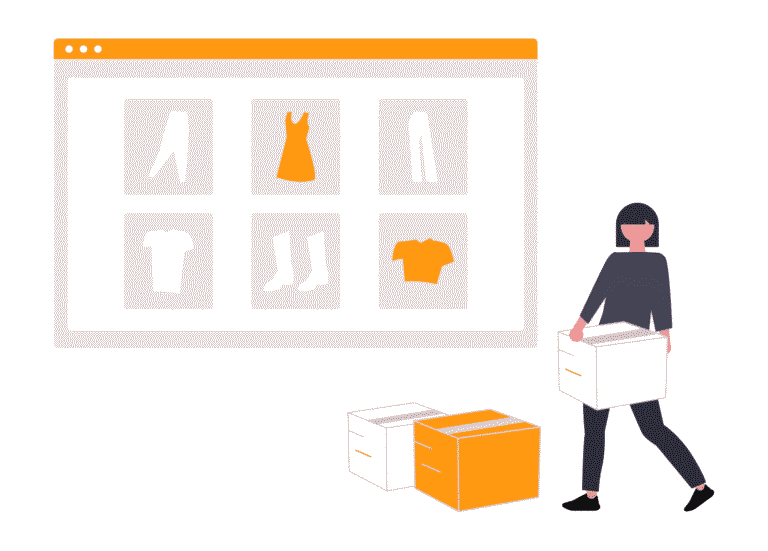Launching an online store in Australia is an exciting venture, but one of the most critical decisions you’ll face is selecting the right e-commerce platform. This choice isn’t just about pretty templates; it’s about the foundation of your online business, impacting everything from your operational efficiency to your customer experience and ultimately, your sales. A well-chosen e-commerce platform can be a powerful engine for growth, while the wrong one can lead to headaches, hidden costs, and missed opportunities for your Australian online store.
This guide will walk you through the essential considerations, helping you navigate the options and make an informed decision that truly empowers your Australian online store for success.

Table of Contents
Understanding Your Options: SaaS vs. Open Source E-commerce Platform
Before diving into specific platforms, it’s crucial to understand the two main types available:
1. Software-as-a-Service (SaaS) Platforms: These are cloud-based, hosted solutions where the provider manages all the technical aspects like hosting, security, and updates. You pay a recurring subscription fee. Examples include Shopify, BigCommerce, Wix, and Squarespace. They are generally easy to set up and use, perfect for those without extensive technical knowledge.
2. Open Source Platforms: These platforms offer the software code for free, giving you full control over customisation. However, you are responsible for hosting, security, maintenance, and often need technical expertise or a developer. WooCommerce (for WordPress) and Magento (Adobe Commerce) are prime examples. They offer immense flexibility but come with more hands-on management.
For many Australian online stores, a SaaS e-commerce platform offers simplicity and speed to market, while open-source suits those needing deep customisation.
Key Factors When Choosing the Right E-commerce Platform for Your Australian Online Store
The “best” platform isn’t universal; it’s the one that best fits your specific business needs.
1. Cost (Initial & Ongoing): Beyond monthly fees, consider transaction fees, app/plugin costs, theme purchases, and potential development expenses. While open source might seem “free” initially, hosting, security, and customisation costs can add up quickly. For Australian online stores, factor in local payment gateway fees and potential GST implications.
2. Scalability: Will the e-commerce platform support your growth? Can it handle increased traffic, more products, and new features as your business expands? Ensure the platform can easily scale from a few products to thousands without performance issues.
3. Features & Functionality: What do you really need?
Product Management: Easy uploading, inventory tracking, variations (sizes, colours).
Marketing Tools: SEO capabilities, discount codes, email marketing integrations, abandoned cart recovery.
Payment Gateways: Ensure compatibility with popular Australian payment methods like credit/debit cards, PayPal, Afterpay, Zip Pay, and more.
Shipping & Logistics: Integrations with Australian carriers (e.g., Australia Post, Sendle) and flexible shipping rate options.
Reporting & Analytics: Dashboards to track sales, traffic, and customer behaviour.
Don’t pay for features you don’t need, but ensure critical ones are available.
4. Ease of Use & Technical Expertise Required: How comfortable are you with technology? Do you have an in-house developer or prefer a drag-and-drop interface? SaaS platforms generally offer a more user-friendly experience, while open source platforms demand more technical proficiency or professional assistance. This is a critical factor for many Australian online stores.
5. Security & Support: Online security is paramount, especially for handling customer data and payments.
PCI DSS Compliance: Ensure the platform is compliant with Payment Card Industry Data Security Standards.
SSL Certificates: Essential for secure transactions (HTTPS).
Customer Support: What kind of support is offered (24/7, email, phone, community forums)? Is it available during Australian business hours?
Reliable support can save you significant headaches down the line.
Popular E-commerce Platforms for Australian Online Stores
Here’s a quick look at some widely used platforms and their common characteristics for the Australian online market:
Shopify: (SaaS) Extremely popular for its ease of use, extensive app store, and robust built-in features. Great for quick setup and scaling. Offers Shopify Payments to simplify payment processing.
WooCommerce: (Open Source) A free plugin for WordPress, offering immense flexibility and customisation for those already using WordPress. Requires self-hosting and more technical management.
BigCommerce: (SaaS) Known for its strong SEO capabilities, advanced features, and scalability for larger stores. Offers more built-in features than Shopify out-of-the-box.
Wix: (SaaS) Excellent drag-and-drop website builder with integrated e-commerce features. Ideal for smaller businesses prioritising design simplicity and ease of use.
Squarespace: (SaaS) Similar to Wix, known for its beautiful, modern templates and integrated features for showcasing products. Popular with creatives and lifestyle brands.
Each e-commerce platform has its strengths, making the choice dependent on your specific requirements.
The Role of IT Business Solutions: Powering Your Business Growth in Your E-commerce Journey
Successfully launching and scaling an Australian online store involves more than just selecting an e-commerce platform. It requires robust underlying IT Business Solutions: Powering Your Business Growth. For instance, ensuring your website has reliable hosting, strong cybersecurity measures, and seamless integration with other critical business software (like CRM, accounting, or inventory management) are all aspects of your overall IT strategy.
A comprehensive IT partner can assist not just in the technical setup of your chosen e-commerce platform, but also in optimising its performance, setting up secure payment gateways specific to the Australian online market, managing cloud infrastructure for scalability, and implementing data backup and disaster recovery plans. Leveraging expert IT Business Solutions: Powering Your Business Growth ensures that your online store is not only operational but also secure, efficient, and ready to support your business as it expands, providing the stability needed for long-term success.
Conclusion
Choosing the right e-commerce platform is a foundational step for any successful Australian online store. It’s not a decision to be taken lightly, as it will impact your daily operations, growth potential, and customer satisfaction. By carefully evaluating your needs against factors like cost, scalability, features, and ease of use, and by partnering with reliable IT Business Solutions: Powering Your Business Growth, you can select an e-commerce platform that truly empowers your business to thrive in the dynamic Australian online market. Take the time, do your research, and build an online presence that stands the test of time.
Frequently Asked Questions (FAQs)
What are the hidden costs of an e-commerce platform?
Hidden costs can include transaction fees (if not using the platform’s native payment gateway), app/plugin subscriptions, premium theme purchases, custom development work, ongoing maintenance (for open source), and marketing tools. Always read the fine print.
How important is local payment gateway integration for Australian online stores?
Extremely important. Australian consumers increasingly use various payment methods like Afterpay, Zip Pay, and local bank transfers in addition to credit cards and PayPal. Providing familiar and convenient payment options reduces cart abandonment and builds trust.
Should I consider a platform that offers multi-currency options?
If you plan to sell internationally from your Australian online store, multi-currency support is crucial for offering competitive pricing and a seamless experience to global customers. Even if not immediately, consider future expansion.
What role does SEO play when choosing the right e-commerce platform?
SEO (Search Engine Optimisation) is vital for visibility. Ensure the platform has good SEO features (e.g., customisable URLs, meta tags, alt text for images, fast loading speeds) that allow your products and pages to rank well in search engines for Australian online stores.
Can I switch e-commerce platforms later if my business grows?
Yes, it’s possible to migrate to a different e-commerce platform, but it can be a complex and time-consuming process. It often involves migrating products, customer data, order history, and redesigning your store. It’s best to try to choose a platform that can scale with you for several years to avoid this hassle.
